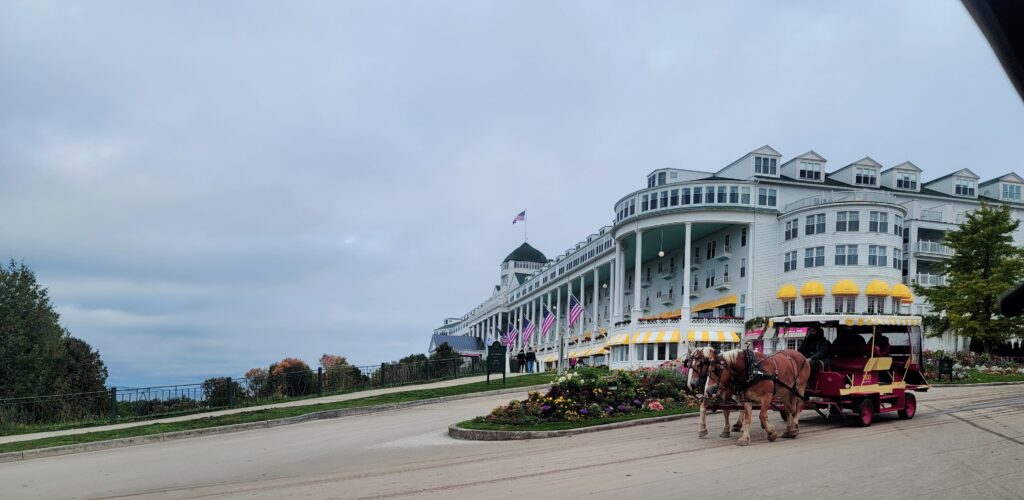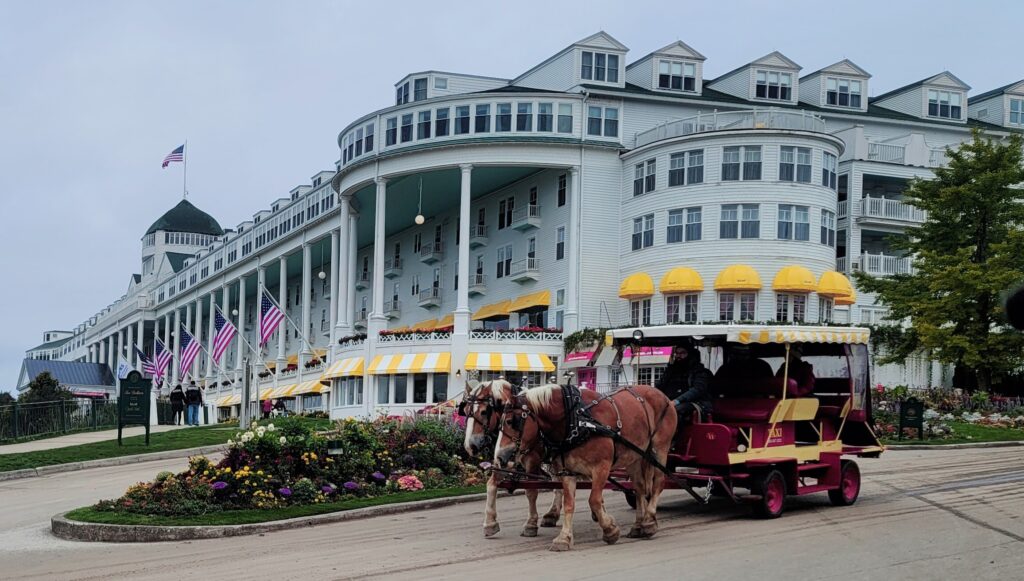

Right: Cowper, Kiani. Grand Hotel and Carriage, 2023
Photography is not just about capturing a moment; it’s about telling a story. Recently, I had the opportunity to photograph the iconic Grand Hotel on Mackinac Island, Michigan. While the initial image had its charm, I realized that it didn’t quite capture the essence of this historic landmark. After some thoughtful cropping, the transformation was remarkable. In this post, I’ll share what was wrong with my original image and how cropping helped me highlight the beauty of the Grand Hotel.
The Initial Image: What Went Wrong?
When I first took the photo of the Grand Hotel, I was excited about the scene. However, upon reviewing the image, I noticed a few issues that detracted from its overall impact:
- Distracting Background Elements: To the left of the hotel, there were numerous background elements, including trees and the street. You can also tell this is taken from a carriage you can see the carriage in the upper right corner. These distractions pulled attention away from the hotel itself, which is the focal point of the image.
- Cluttered Composition: The presence of these additional elements made the composition feel cluttered. Instead of showcasing the grandeur of the hotel, the image felt busy and overwhelming.
- Lack of Focus on the Subject: The original framing didn’t emphasize the hotel’s historic architecture or the charm of the horse-drawn carriage in front of it. The viewer’s eye was drawn in multiple directions rather than being guided to the main subject.
Cropping Concepts Featured in the Final Image
In the final version of the photo the following cropping concepts were effectively utilized:
- Elimination of Negative Space: By removing the excessive negative space on the left, the image became more engaging and complete. The focus shifted entirely to the hotel and carriage, creating a stronger visual connection.
- Rule of Thirds: The new composition allowed me to position the hotel in a way that aligns with the rule of thirds, creating a more dynamic and visually appealing image. This technique helps guide the viewer’s eye and adds interest to the composition.
- Framing the Subject: The crop effectively framed the hotel and carriage, enhancing their prominence in the image. This technique draws attention to the subject and creates a sense of intimacy with the viewer.
Conclusion
Cropping can be a powerful tool in photography, transforming an ordinary image into something extraordinary. My initial photo of the Grand Hotel had potential, but it was the act of cropping that truly brought its beauty to life. By eliminating distractions and focusing on the hotel and carriage, I was able to create a compelling image that captures the essence of this historic landmark.


Hi Kiani! What an impactful change! The original image has me wanting to zoom in to see more detail. With the cropped image, the size and the grandeur of the Grand Hotel really comes into focus. I’d love to know how you got your images side by side like that and how you stacked your captions…
Hi Kiani!
What a beautiful location and photo! To your point, both the original and cropped image exude charm, welcoming viewers into the space. I think the choice to crop out the excess negative space on the left hand helped shift the focus from a long, winding street to a featured landmark. While I don’t necessarily agree that the image felt cluttered, because the shot was taken from such a distance, I do think making the hotel fill up the majority of the space really accentuated the “Grand” within the hotel’s name. If open to shifting focus once more, I’d suggest cropping the image to feature more of the horse drawn carriage. This may change the story from accommodation feature to excursion highlight.